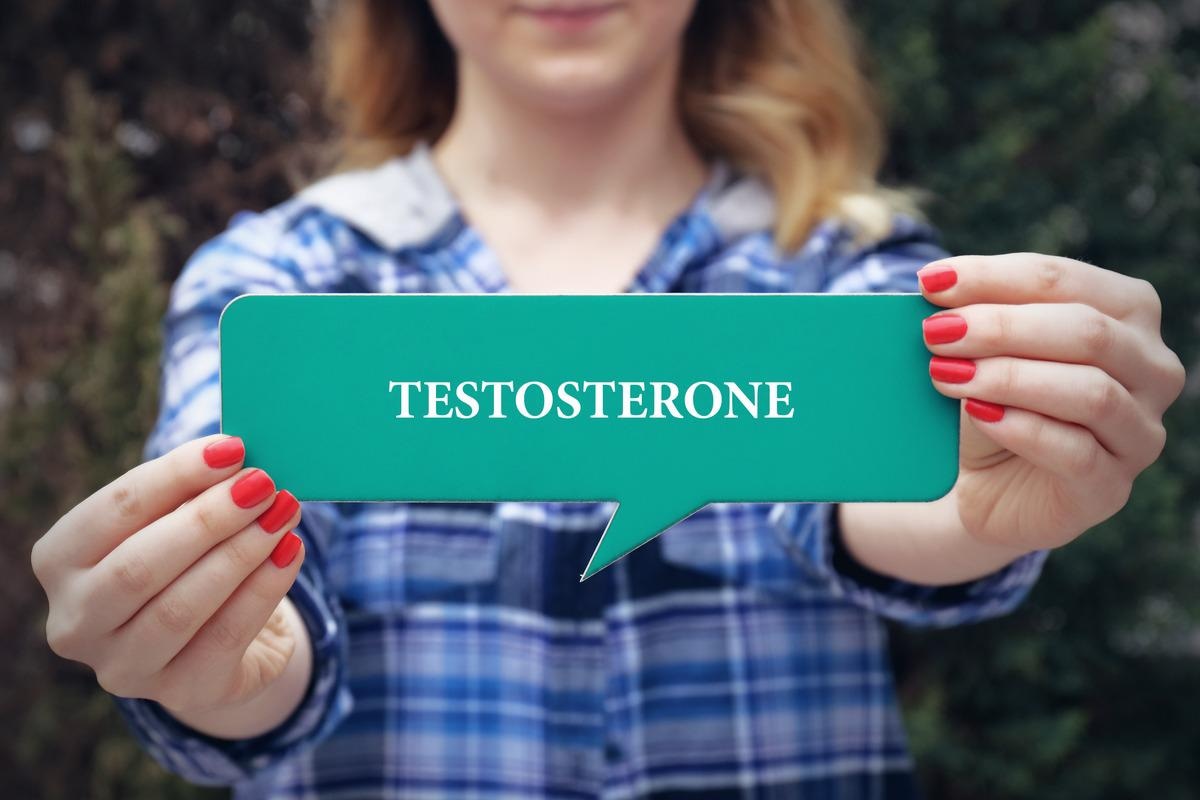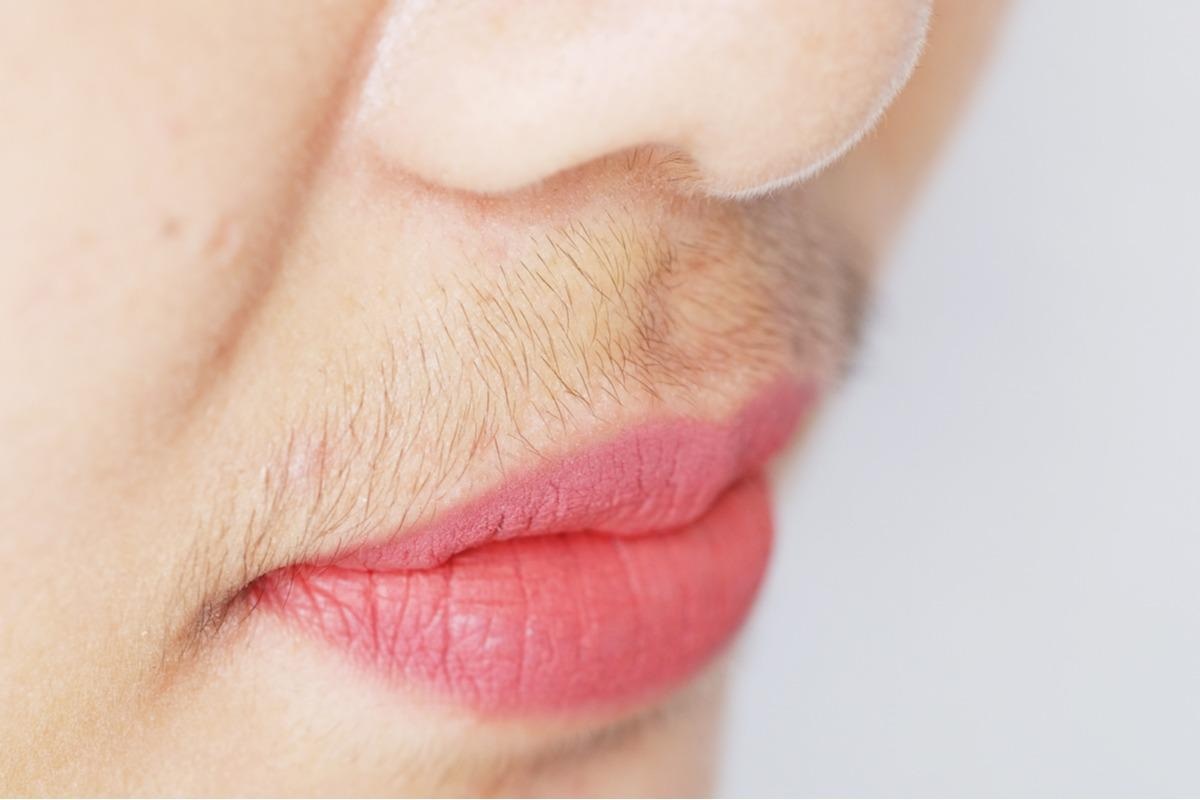Estrogens are the female sex hormones that mediate the important processes that result in the maturation of the female reproductive system and secondary sexual characteristics. Yet, male sex hormones, namely androgens, are also essential for female health, physical and emotional.
 Image Credit: Marta Design/Shutterstock.com
Image Credit: Marta Design/Shutterstock.com
Androgens in women act not only as the precursor of estrogens but also affect most organ systems of the female body, including the cardiovascular, muscular, and skeletal systems. Interestingly, they also directly affect the female reproductive system, breasts, mood, cognition, and other systems.
In women, active androgens include the following:
- dehydroepiandrosterone sulfate (DHEA-S)
- dehydroepiandrosterone (DHEA)
- androstenedione
- testosterone
- dihydrotestosterone
Androgen Production in Women
About 25% of androgens in women come from the adrenal glands, another 25% from the ovaries, and the rest peripheral tissues. The chief precursors of androgens in the body are DHEA-S – almost always in the adrenal glands - DHEA and androstenedione. The latter two are produced in the adrenals, ovaries, and peripheral tissues by conversion.
These precursors are converted to testosterone and dihydrotestosterone, the active forms. Testosterone in the blood is converted to the more active form dihydrotestosterone by 5-alpha-reductase and aromatized to estradiol.
This conversion occurs at different rates depending on the tissue, the level of receptor expression, and the activity of the enzymes involved. Peripheral androgen production is not in proportion to serum testosterone, nor does it reflect the tissue sensitivity to androgens.
Active testosterone is found in blood, unbound and bound to serum albumin. However, total testosterone measurements include inactive testosterone, bound to sex hormone-binding globulin (SHBG), a carrier protein synthesized in the liver that binds with high affinity to the sex hormones. Increased SHBG levels reflect in lower levels of active testosterone and vice versa.
Androgen levels begin to decline with age in a woman, from the mid-30s onward, with no perceptible increase in the speed of decline at menopause. Even after menopause, the ovary continues to produce hormones, with up to half of the testosterone in the woman’s body coming from this organ.
A rapid drop in blood testosterone levels is seen in women with both ovaries removed. Still, the adrenals compensate for the reduced DHEA and androstenedione from the ovaries by overproduction. However, a slow overall fall occurs such that the levels of both testosterone and androstenedione one decade after menopause are only half of those in premenopausal women.
As shown by the lack of correlation between serum testosterone levels and peripheral androgen production, it is difficult to say exactly what level is considered androgen deficiency in women. Liquid or gas chromatography and tandem mass spectrometry are the most accurate methods for total testosterone assays, followed by radioimmunoassay.
Testosterone and Cardiometabolic Disease
Estrogen promotes vasodilation, reduces the formation of atherosclerotic plaques, is anti-inflammatory, and thus promotes vascular health before menopause. Testosterone, in contrast, acts on the blood vessels both directly and following its conversion to estradiol.
It directly increases nitric oxide synthesis and alters potassium and calcium ion channels, causing the blood vessels to relax. Low levels of testosterone reduce cardiovascular health, but too much causes vasoconstriction.
As the levels of testosterone increase, the risk of cardiovascular disease increases. However, short-term testosterone therapy (less than two years) has not shown a greater risk in low-risk women, provided the level is within normal female ranges.
Low androgen levels in women have an adverse effect on cardiovascular health because testosterone improves vascular relaxation, both endothelium-mediated and otherwise, improving the blood flow by its effects on vascular resistance in the peripheral vessels. However, endogenous testosterone levels are inversely related to cardiovascular disease risk.
This cannot be interpreted to mean that endogenous testosterone is protective against such conditions because of the observational nature of most studies in this area and the conflicting findings of other researchers. Moreover, the relatively insensitive testosterone assays used and the failure to consider the effect of SHBG binding, or estrogen.
According to Davis, S. R. et al. (2015), “Overall, the available observational data suggest that low concentrations of total, free, and bioavailable testosterone (free and albumin-bound testosterone) and SHBG in serum are associated with a greater likelihood of atherosclerotic carotid disease, cardiovascular events, and total mortality. Furthermore, extremely high concentrations of endogenous bioavailable testosterone also seem to increase the future risk of CVD in women.”
Testosterone given orally increases the level of low-density lipoprotein cholesterol (LDL) while reducing high-density lipoprotein (HDL) levels and triglycerides. This is not seen with transdermal testosterone. Blood sugar, blood pressure, and body mass index are alike unaffected by exogenous testosterone as long as the levels remain within the normal range.
Cutaneous Effects
The most powerful androgenic effect on the hair follicles is mediated by dihydrotestosterone, with shrinkage and a shorter growth phase of the follicle, resulting in hair loss. While a higher androgen-to-estrogen ratio is associated with female pattern hair loss, androgen receptors on the chin, cheeks and upper lips cause coarse hair to grow or excessive hair growth (hirsutism).
The latter is seen in polycystic ovarian syndrome, perhaps due to high testosterone production in the ovaries. In other cases, serum testosterone levels are normal, despite the hirsutism, perhaps because of enhanced 5-alpha-reductase activity. Hirsutism risk is 10.7% in women taking testosterone, vs. 6.6% with those on placebo.
Acne is also more common with testosterone therapy since androgens stimulate the sebaceous glands to grow and secrete sebum. This acts as a growth medium for Cutibacterium acnes. Interestingly, most acne patients among women do not have raised testosterone levels.
 Image Credit: JIB Liverpool/Shutterstock.com
Image Credit: JIB Liverpool/Shutterstock.com
Mood and Cognition
The brain is shaped by estrogens during fetal development and continues to be affected. During the reproductive years, testosterone levels in the brain exceed those of estradiol by several times.
Both estrogen and testosterone have anti-inflammatory effects, protecting the nerve cells against injury. Testosterone may modulate oxidative stress and reduce the accumulation of the injurious amyloid-beta protein within the brain while speeding up nerve regeneration. Some of these effects may be mediated by estrogen.
Androgen receptors are scattered through the central nervous system, and their activity affects libido, heat regulation, sleep, cognitive function, language, and visuospatial skills. While a marked cognitive shift does not accompany menopause, some women may notice a reduced quality of life. Testosterone therapy does not seem to have any adverse cognitive effect, nor does it adversely affect mood or well-being.
Some evidence suggests a positive effect on verbal learning and memory with transdermal testosterone. While these do justify further research, they are not sufficient for the clinical use of testosterone for this purpose.
Musculoskeletal Function
Androgen receptors on bone-forming cells mean that low androgen levels, as in post-menopausal women, are associated with reduced bone density and increased risk of fractures in the hip and spine.
As of now, some benefit in terms of improved muscle mass and muscle strength may be seen with testosterone supplementation in women who have undergone hysterectomy (whether or not the ovaries were also removed), proportional to the dose. The greatest improvement was seen with higher-than-normal testosterone doses.
However, given the lack of data, further studies are required to recommend the use of testosterone in post-menopausal women for bone health.
Breast/Endometrial Tissue
The high aromatase levels in the breast tissue mean that testosterone is rapidly and abundantly converted to estrogen, producing proliferative effects on the breast. Interestingly, however, experimental results show the opposite, with testosterone demonstrating anti-proliferative effects while promoting apoptosis within breast tissue.
Testosterone also inhibits estrogen receptor alpha and has been found to suppress the growth of breast cancer cells. The extent to which these changes occur depends on the dose of androgens, the type of therapy, and the type of breast cancer cell.
Testosterone supplementation over the short term does not appear to cause any adverse effects on the breast, such as pain, tenderness, masses, or cancer. In one study, the rates of invasive breast cancer in women who had undergone surgical menopause were not raised with transdermal testosterone. However, the follow-up period was short (four years).
Testosterone levels are high in women with polycystic ovary syndrome or transgender individuals on high-dose androgens, but these groups do not show a higher incidence of breast cancer. This risk may be mediated via increased estrogen receptor alpha density. Some scientists postulate that a higher androgen receptor expression may inhibit the growth of tumors that express estrogen receptors alpha. In contrast, those that do not express this receptor may have a better prognosis.
Overall, no higher risk has been shown in past or current users of methyltestosterone, a form of the hormone that cannot be converted to estrogen. Transdermal testosterone use is not linked to invasive breast cancer, but long-term data are lacking.
There is very little data on the risk of ovarian and endometrial cancer with past or current use of testosterone. In the endometrial tissue, aromatase levels are low, and testosterone supplementation is unlikely to cause endometrial hyperplasia.
Testosterone and Female Sexual Health
Androgens do promote sexual health, as shown by multiple large studies. Testosterone therapy is recommended to treat low sexual desire in post-menopausal women if no other cause can be found on thorough examination – this being the only current approved recommendation for this androgen in women.
It is important to recognize that sexual function is not the result of a drop in androgens in perimenopause, as this has been ruled out already. Conversely, specific androgen (DHEA-S) levels are related to certain measures of sexual function (arousal, desire, and responsiveness) as reported by the women themselves.
After surgical menopause, no absolute correlation has been found between sexual desire and androgen levels, as mentioned. Still, since female hormones are also reduced at this time, accompanied by infertility, the picture is very complicated.
Hypoactive sexual desire disorder (HSDD) is a validated disorder including low desire and lack of arousal. Testosterone has been shown to be effective with or without estrogen to treat this, in post-menopausal women, on the basis of short-term studies.
The transdermal route is preferred to minimize systemic effects, with regular monitoring to maintain physiologic concentrations. Transdermal testosterone also does not negatively affect metabolic risk factors for cardiovascular disease, including lipid levels, inflammatory markers, coagulation proteins, or insulin resistance.
Testosterone and Vaginal Health
Atrophy of the vulva and vagina occurs following menopause. Low-dose vaginal estrogen is a very safe and effective treatment. Still, testosterone has been proposed as a substitution in those women who have breast cancer being treated with aromatase inhibitors. This is based on the presence of androgen receptors in the vaginal tissues.
Though androgen receptor genes are expressed at higher levels with age, the receptors themselves appear to decrease. However, vaginal testosterone enhances vaginal thickness, inducing epithelial proliferation in post-menopausal women. In some papers, the effect of testosterone is described as being superior to conjugated equine estrogen, with better libido, lubrication, and reduced dyspareunia.
This may be explained by the local conversion of testosterone to estradiol without systemic exposure to estradiol, but this has not been confirmed. This points to the need for more studies before this therapy can be adopted in women with vulvovaginal atrophy.
Testosterone in Women – Mayo Clinic Women’s Health Clinic
Conclusion
Testosterone therapy is a possible option to be used with deliberation in women who are prematurely menopausal or have hypopituitarism. Further studies must be carried out to inform the clinical use of this powerful sex hormone and elucidate its role in preventing aging-related disease safely and effectively.
References
Further Reading